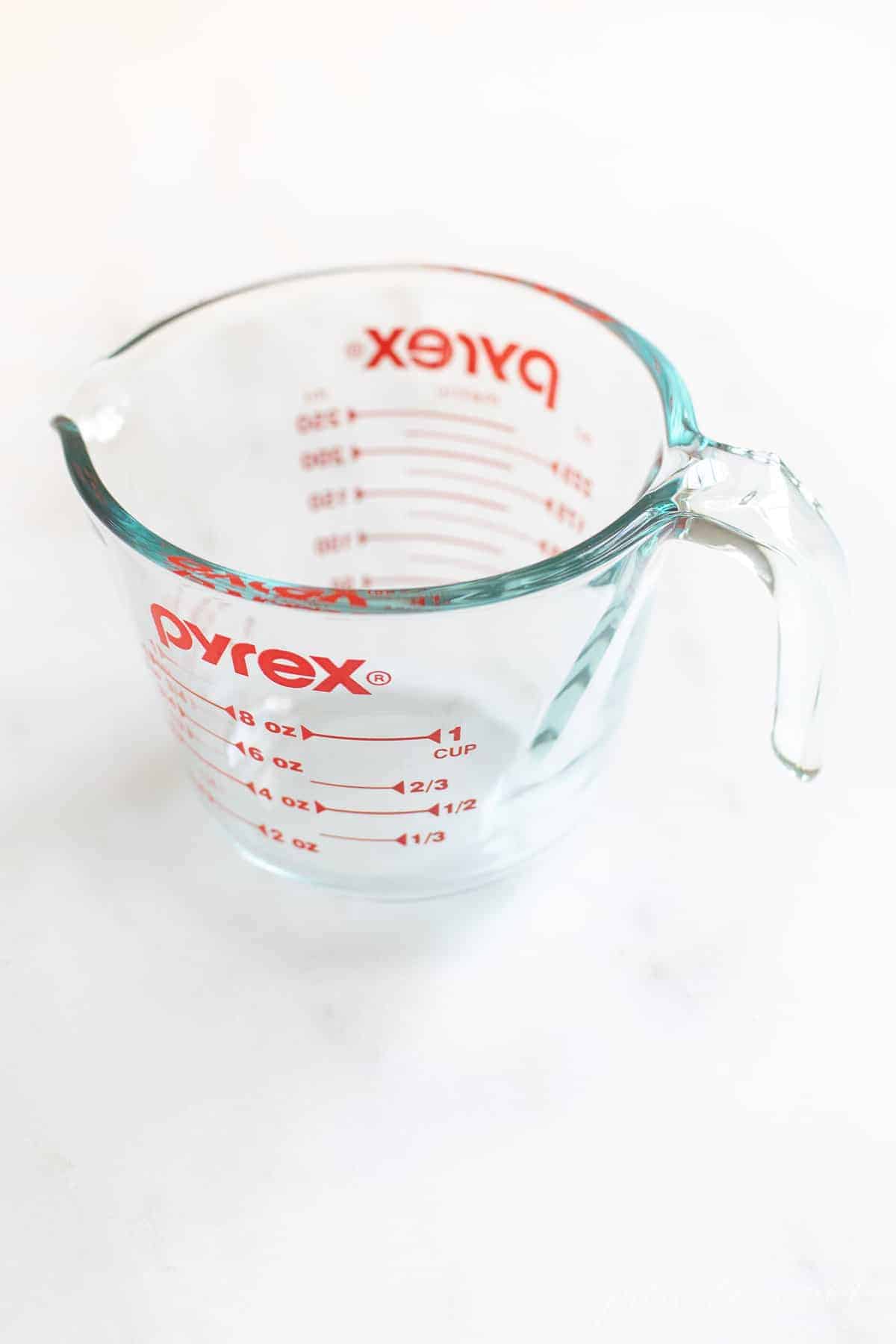Do you know the difference between dry and liquid measuring cups? Use this simple guide to learn how to measure different ingredients in dry versus liquid measuring cups.
This is such a simple way to enhance your skills in the kitchen. You might be surprised at just how differently your measurements can add up!
Did you know? There’s actually a difference between ounces (they measure weight) and fluid ounces (they measure volume). Even though I grew up in the kitchen with my family, I never fully understood this concept until much later.
It’s small, but significant measurements like this that can make an incredible impact in your baking! That’s why I’m always working on new guides to help you with the behind-the-scenes kitchen questions so you’ll always have a place to turn.
You’ll learn where and when to use each type, and the best techniques for measuring different ingredients! Even if you’re a lifelong baker, there are tips and tricks here that might come in handy. Cooking tends to be more forgiving with measurements, but baking is not.
Learn a little about ounces, cups, weights and conversions in this simple guide! I’ll even share my favorite measuring tools, too. Use the drop down Table of Contents to navigate this post with ease.
Measuring spoons are used to measure small quantities of both dry and liquid ingredients.

Dry vs. Liquid in Ounces
1 cup equals 8 ounces. This is one of those measurements that most of us know off the top of our heads, right?
However, keep in mind that this actually means that 1 cup of liquid = 8 fluid ounces. Did you know that things change when we’re talking about dry ingredients? When it comes to dry ingredients, you can’t use the same conversions.
Even more confusing? Dry ingredients will weigh different amounts. Flour and candy melts are going to weigh differently based on a 1 cup measurement.
When to Use Dry Measuring Cups
Use dry measuring cups for ingredients like sugars, flour, nuts, chocolate chips, and even items like sour cream, peanut butter, yogurt, applesauce, and even honey! (While these last items might seem more liquid, the thick nature of them lends itself more to a leveled measuring cup.)
When measuring a dry ingredient, always spoon the ingredient into your dry measuring cup (or gently scoop from a container) and then level with a flat utensil across the top.

Can I use measuring spoon for liquid?
FAQ
What can I use if I don’t have a liquid measuring cup?
How do you measure a liquid ingredient with a measuring spoon?
How much should one fill a liquid if using a measuring spoon?
Is 1 cup dry the same as 1 cup liquid?
Are measuring spoons accurate?
Measuring spoons, made to measure both dry and liquid ingredients, are not as accurate for liquid ingredients. However, since measuring cups don’t measure such small increments, measuring spoons must be used for teaspoons and tablespoons of liquid (or, in most cases, anything under 2 fluid ounces).
How do you use a measuring spoon?
Measuring spoons work with both wet and dry ingredients. Pour the liquids into the measuring cup. When checking your measurement, be sure your eyes are even with the level of the liquid. If you look from above, you might misread the amount. Be sure to fill the spoon and keep it level when you’re measuring smaller amounts.
How do I measure liquid ingredients?
Follow these simple steps to measuring liquid ingredients, then watch our how-to video. Measuring liquid ingredients accurately isn’t hard to do, but it’s important to do it right — especially when you’re baking. First, you need the right tools: liquid measuring cups. Measuring spoons work with both wet and dry ingredients.
Do measuring spoons come in different sizes?
Measuring spoons come in different sizes. Each size corresponds to a certain amount. You can check the metric measurements below. You might have seen in the list of ingredients, “1 teaspoon” or “1 tablespoon” in Japanese recipes. 1 teaspoon corresponds to 5 ml, and 1 tablespoon amounts to 15 ml.
